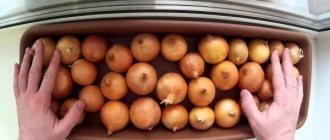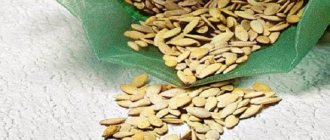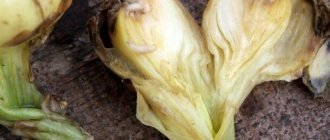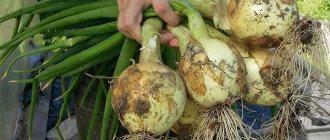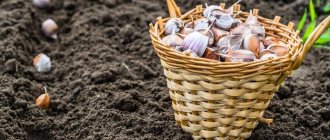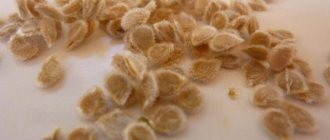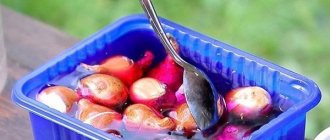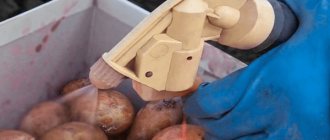There is an opinion that processing onions before planting in spring or autumn has a positive effect on yield. Moreover, it prevents the appearance of arrows. And it prevents diseases from developing. Good all around, right? However, many gardeners do not soak onion sets and get an excellent harvest. Others, on the contrary, carry out pre-sowing preparation according to all the rules, but remain dissatisfied with the result.
Why process onions before planting? In what cases is this procedure necessary, and when is it unnecessary? What are onion sets soaked in? These are the main questions we have to understand.
The best varieties of winter onions
When planting onions before winter, pay attention to the regionalization of the variety . Southern heat-loving varieties are not suitable for these purposes. Typically, onions grown from their own seeds, the so-called nigella, are perfectly adapted to winter sowing.
Varieties suitable for planting before winter:
- Stuttgarter Riesen – sharp in taste, keeps well, a little small.
- Shakespeare is not as spicy, it stores a little worse, but the onions are larger.
- Senshui – spicy, large, for long-term storage.
- Arzamas - spicy, fits well, a bit small.
- Danilovsky - sharp, well stored, smallish.
- The radar, or Raider, is sharp and well stored.
- Red Baron – spicy, for long-term storage.
- Strigunovsky is sharp and stores well, but is small.
- Sturon is sharp and stores well.
- Ellan is sweet in taste and stores well.
Optimal timing for planting before winter
Each region will have its own planting dates. You should choose a time to plant onions before the soil freezes . In this case, the bulb will have time to take root, but will not have time to germinate.
Important! Onions take one to two weeks to germinate.
If the onion grows 1-2 cm, there is nothing to worry about, but if the height of the feather is higher than 5 cm, it will not be able to survive the winter . That's why it's so important to choose the right time.
Pay attention to the climate conditions in your region . Monitor your temperature for a week. If it stays at +5°C... +7°C and gradually drops to 0°C, then it’s time to plant winter onions.
Optimal planting dates for Russian regions :
- Central region - from the end of September until the second half of October;
- Siberia and the Urals - until the last days of September;
- Southern regions – October-November.
Selecting the time to plant seedlings in the spring
The timing of planting onion sets is the end of April, the beginning of May, depending on the climatic characteristics of the region. If you delay planting too much, the moisture that the plant needs at first will evaporate from the ground. Overdrying the soil will affect the quality of seedlings. Read about planting onions before winter here.
Sevok
Hercules
In some regions this can be done starting in mid-March. However, you should remember an important rule when working with onion seeds - for sowing you need to take only last year’s seeds. This is due to the fact that nigella has a short shelf life. To disinfect, seeds are dipped in a weak solution of potassium permanganate for 1-2 days. Then the seeds are hardened by dipping alternately in warm water and then in cold water. This link will tell you about planting onion sets in the fall.
Onions are not a very moisture-loving crop, so the bed must be formed so that excess moisture does not accumulate on it. The soil must be fertile and loose. Onion sets, for example, will not be able to grow in clay soil.
It is necessary to add some mineral fertilizers to the top layer of soil. This is due to the fact that onions do not have a very long root system. A description of the onion root system is described here.
Why process onions before planting in the fall?
Before planting, healthy seed material is selected . It must be clean and undamaged, up to 3 cm in diameter.
Important! Dry or sprouted bulbs are not suitable for planting.
Before planting begins in the fall, fertilizers are applied to the onions , and the selected bulbs are processed. This is done to prevent diseases and obtain a high-quality harvest.
Advantages
There are various ways to process onions.
All of them are aimed at:
- protection from pests and diseases;
- reducing the formation of flower shoots;
- improving the quality of the crop;
- increase in crop size;
- increasing germination.
Do I need to soak onion sets before planting before winter?
In winter, bulbs are more susceptible to the development of various fungal infections than at other times of the year.
This is facilitated by the current conditions, especially if the bulb itself was infected before planting. Soaking helps disinfect the seed before growing. Important! Do not overcook the bulbs so that they do not become oversaturated with moisture. Oversaturated seedlings will freeze and crack in the soil.
Optimal time for processing onions
Methods for processing onion sets before planting are different . These can be both chemicals and folk remedies. For 2-3 days, the seedlings should be heated by air, placing the bulbs near the radiator. This will help avoid the formation of arrows and inflorescences.
Chemical treatment is usually carried out 3-4 hours before planting in the ground. If you choose a folk remedy, then it is recommended to soak them in such solutions 30 minutes before planting.
Interesting things on the site:
We follow the rules of crop rotation: what can be planted after onions
How to properly water onions in open ground and in a greenhouse
Harvesting and storing onions: when is it time to dig them out of the garden?
Seed preparation
Seed material is prepared for any planting - both autumn and spring. When choosing the first option, you must first decide on the variety of sets. It is better to prefer early and non-shooting varieties.
What can be achieved by preparing seedlings for planting
Preparing seedlings for cultivation has many advantages:
- Prevention of rot and various diseases.
- Increased resistance to cold.
- Faster germination in spring.
- Increased productivity.
- Low probability of arrow formation.
Before planting, onion sets need to be processed
Note! However, processing onions before planting in the fall before winter does not always bring benefits. Negative consequences are also possible: oversaturation with moisture, increased risk of crop loss and early growth during a period of temporary warming.
How and how to treat onions before planting before winter
Seed onions are processed before planting in the ground . Treatment is carried out in order to prevent diseases and pests.
"Fitosporin"
Treatment with Fitosporin has a disinfecting effect .
“Fitosporin” is a biological product based on microorganisms that has a prophylactic purpose against fungal and bacterial diseases. Systemic drug. This means that after entering the crop, it spreads through the vessels of the plant and begins to treat diseases. "Fitosporin" prevents bacteriosis, peronosporosis, and various types of rot . The biological product has no harmful effects on pests and is available in the form of powder, paste and liquid. Dry and pasty mixtures are pre-soaked in water for two hours.
Important! It is recommended to use filtered water for preparing mixtures. In chlorinated water, the bacteria included in the drug will die.
To prepare a solution from the powder, take 10 g of the mixture per 500 ml of water.
The paste solution is prepared in two stages:
- To begin with, make a concentrate at the rate of 100 g of paste per 200 ml of water. The main thing in preparing the concentrate is to maintain the proportions 1:2.
- Final solution: 3 tbsp. l. concentrate per 200 ml of water.
A solution of liquid “Fitosporin” is diluted at the rate of 10 drops per 200 ml of water.
The prepared solution is sprayed onto the bulbs before planting or soaked 2 hours before planting in the ground. There is no need to rinse the bulbs after processing.
Important! Treatment with the drug is carried out either indoors or in cloudy weather. The solution should not be exposed to direct sunlight - this can lead to the death of the bacteria included in the preparation.
Potassium permangantsovka
Treatment with potassium permanganate is popular among summer residents. It has an antiseptic effect .
Useful properties of potassium permanganate solution:
- protects seed material from wintering pests;
- helps prevent infection with fungal diseases;
- Serves as a foliar fertilizer and accelerates the rooting of bulbs.
To soak seed onions, a weak solution of potassium permanganate is required : 1 g of powder per 1 liter of water. The onions are placed in the resulting liquid for 30 minutes, then planted in the ground.
Important! After treatment with the solution, the onions are not rinsed or dried.
Salt or soda solution
The main advantage of this processing method is its low cost and availability.
Treatment with saline solution prevents infection with stem and onion nematodes and fungal diseases.
For saline solution, take 1 tbsp. l. table salt per 1 liter of water. Soak the seed onions in the resulting liquid for 10-20 minutes. Salt is sometimes replaced with baking soda. The rules for preparing a solution from soda are the same.
Copper sulfate
Copper sulfate is produced in powder form. A blue, odorless substance. Has a disinfecting effect .
Treatment with copper sulfate prevents infection of the crop with fungal diseases.
Important! The substance has toxic properties.
When preparing a solution from copper sulfate, take 30 g of powder per 10 liters of warm water and mix thoroughly. Onion sets are soaked for 2-3 hours in the resulting liquid, after which they are dried and planted in the ground.
Ash
Wood ash solution is a natural growth stimulator .
It contains a large number of useful chemical elements. Treatment with a solution of ash prevents the formation of neck rot, fusarium bottom rot, green mold rot, and aspergillosis.
To obtain a solution, dissolve 250 g of wood ash in 5 liters of water. The onion is soaked for 5-7 minutes in the resulting liquid. Then dry in the open air for 2-3 hours. The onions are ready to plant.
"Epin-Extra"
"Epin-Extra" is a plant phytohormone . Helps the plant adapt to climatic conditions and serves as a top dressing.
Beneficial features:
- helps the plant cope with stress factors: temperature changes, frosts;
- stimulates growth and development;
- strengthens the root system;
- helps to increase green mass.
To prepare a solution from Epin, 5 drops of the drug are diluted in 0.5 liters of water. Lower the onions for 10-15 minutes, then plant them in the ground.
Ammonium nitrate
Ammonium nitrate solution has a disinfectant effect . Used against pests, diseases, strengthens the root system.
To prepare the solution, use warm water. Take 3 g of ammonium nitrate per 10 liters of water, soak the onion for 10-15 minutes.
Birch tar
The use of a solution of birch tar is a folk remedy and does not cause any harm to humans and nature. Has an antiseptic effect .
The use of birch tar prevents the appearance of fungal diseases, putrefactive bacteria, and onion flies.
The day before soaking, the bulbs must be heated at a temperature of up to +38°C. The solution is prepared at the rate of 1 tbsp. l. tar per 1 liter of warm water. Let the onion sit for 2-3 hours, stirring occasionally.
Important! Before soaking, remove the old skins from the onions and cut off the tops.
Kerosene
Kerosene has an unpleasant, pungent odor, which repels onion flies and other pests.
Kerosene based solution: 1 tbsp. l. kerosene per 5 liters of water.
Important! Do not soak onions in kerosene solution.
The prepared mixture is poured onto the soil prepared for planting onions.
DO NOT THINK OF PLANTING ONIONS until you know this recipe for treating diseases and pests!
Preparing the soil for onions: how to properly cultivate the soil
It is at this stage that it is recommended to fertilize the soil; it is best to apply the bulk of fertilizers in winter, so that there is time for the “assimilation” of nutrients. You cannot add (drain) manure and lime into the soil at the same time - this reduces the amount of nitrogen in the fertilizer. In autumn, the bed is dug up or plowed deeply (to a depth of 20 cm) so that oxygen gets into the deep layers of the soil. When digging, the required amount of fertilizer is applied. For each type of soil, fertilizing is selected individually. If the soil is highly acidic, use one of the following components: wood ash, ground chalk, dolomite flour, lime, and salted soda mixture. The optimal soil acidity for onion sets is pH 6.4-7.9.
This material will tell you about growing onions in open ground.
If the bed has not been ready since the fall, then all the same work will have to be done in the spring. To do this, when digging the beds for onion sets, add 2-3 kg of humus (namely humus, not fresh manure) to the soil - this is from organic fertilizers. If we talk about mineral fertilizers, the best ones are superphosphate (0.44-0.5 kg per 10 square meters of area) and sodium sulfate (0.2-0.3 kg). Application is also made during digging. On clay soils, it is advisable to add sand at the rate of 7-10 kg per square meter of sown area.
The soil must be thoroughly loosened, because onions love light, airy soils.
What other ways are there to prepare winter onions for planting?
Before treating the bulbs with drugs against diseases and pests, the seedlings go through the following stages of preparation :
- selection of healthy and whole bulbs;
- drying and ventilation;
- preventive treatment.
Sorting and drying
Required storage temperature for onion sets: +18°C . But it is not always possible to comply with this. Onions stored at low temperatures do not form large bulbs and will go into arrows.
Therefore, a couple of weeks before planting, the onions are dried and ventilated after winter storage. To do this, it is enough to keep the onion for 14-20 days at a temperature of +20°C.
During the sorting process, onions go through several stages:
- selection of bulbs with a diameter of up to 3 cm;
- selection of healthy, not flaccid and uninjured bulbs;
- removal of dry husks;
- trimming dry tops.
Warming up
The method prevents the formation of onion shoots and stimulates the growth of the root system . Sometimes it helps against powdery mildew infection.
Warming up the bulbs begins 10 hours before planting at a temperature of +40°C. You can warm it up by laying out the seeds near radiators and other heating devices.
Hardening
If there is no time for long heating, then you can use an express processing method - hardening . To do this, prepare water at a temperature of +45°C to +50°C and immerse the bulbs in it for 15 minutes. Then soak for the same time in cold water.
The procedure increases the immunity of the crop and helps acclimatize the seed.
Soak
The easiest and most convenient way to prepare onions for planting is soaking in plain water . The seedlings are kept in hot water (+50°C) for 10-15 minutes, without the use of any drugs or fertilizers.
How to soak onions in potassium permanganate before planting. Is it necessary and when to soak onions before planting?
In principle, we answered the question whether it is necessary to soak onions before autumn and spring planting in the first paragraph. Soaking, that is, treatment of the sets with special solutions, is necessary. But in the fall it is less than in the spring, since winter frosts are a good disinfectant. However, it is better to play it safe and process the onions. After all, pest larvae, fungal spores and viruses can survive the cold by hiding in the soil and under the husk. In the spring they will “wake up” and begin their life activities.
It is important! In autumn, onions must be processed several days before planting. Seeds should be planted dry in the soil. In spring, you can soak it immediately before planting.
The preparation of onions for spring and autumn planting begins with sorting:
- Without regret, throw away dried, very soft and rotten onions.
- Sort the sets by size. It is better to plant small and large onions in different beds to make caring for the plants easier in the future.
- Remove the top husk from the remaining planting material and carefully inspect the set again. There may be signs of disease under the husk.
In spring, the dry tops of the bulbs should be cut off. There is no need to trim onions in the fall. If you plant sets for turnips, cut off only the very top. To get greens as quickly as possible, you need to make a deep cut down to living tissue. This procedure can be skipped, especially if there is a lot of planting material and there is no time to trim each bulb.
How to properly prepare the soil and cultivate beds
Onions love loose neutral soils.
When placing a bulb bed, consider these nuances:
- choose a well-lit place;
- do not allow water to stagnate;
- the predecessors should be carrots, potatoes, tomatoes, cabbage.
A few days before planting, the soil is dug up and organic fertilizers are added.
Before planting, disinfection measures are carried out - the beds are spilled with a solution of copper sulfate: 2 tbsp. l. for 10 liters of water. Then they begin to plant the prepared onions.
Care after planting onions
After planting, onion care is as follows:
- When the temperature rises above 0°C and the threat of frost has passed, the beds are cleared of branches and mulch. This will allow the soil to warm up under the sun.
- In early spring, you can cover the planting with covering agricultural material at night to protect it from the cold and speed up the ripening of the crop.
- The soil in the planting area should be loosened, and then the loosening process should be carried out after rain and watering. Along with loosening, weeds should be removed, which attract nutrients and moisture.
- To obtain a good harvest, plantings should be fed with an infusion of chicken manure. To do this, chicken manure is dissolved in water in a ratio of 1:20. Feeding is repeated when green feathers appear. You can also use mineral fertilizers containing nitrogen, phosphorus and potassium. In the second half of the growing season, nitrogen-containing fertilizers must be reduced or eliminated altogether.
- Measures should be taken to combat insect pests: for example, sprinkle tobacco dust mixed with chalk or lime between the rows.
Did you know? One of the oldest cookbooks in the form of clay tablets dates back to Ancient Mesopotamia and includes recipes with different types of onions.
Tips and tricks
Experienced farmers recommend complex processing of onions :
- Organize a continuous process of onion processing, where first there is heating, then treatment with copper sulfate or manganese solution. This will kill fungal spores on the surface of the bulbs or prevent them from being affected if the pathogen is in the ground.
- Do not feed onions with fresh manure during planting. It causes cultural diseases.
- To increase germination energy, it is recommended to soak the seeds in a solution of complex fertilizer.
- Be sure to sort the planting material before planting.
Is it necessary to cut off the top of the set before planting?
When growing onions in a small area, it is recommended to sample the top to speed up germination and provide better conditions for the growing season.
Correct pruning involves trimming the woven part of the top by 2-4 mm from the top and the roots. This will make soaking more effective, as the solution will penetrate deeper between the scales.
Important! There is no need to cut off too much from the top so that the sets do not rot and release the greens in time.
For feathers, 1/3 of the top is cut off from large heads. When planting on the head, only the tail is cut off so as not to damage the white skin.
Some varieties are pruned on both sides to speed up growth and formation of the root system. Results are visible within a few days.
Experienced gardeners recommend cutting off the woven part of the top, since it is difficult for feathers to break through it.
The quality of the future onion harvest depends on pre-sowing treatment. It includes a set of agrotechnical measures, thanks to which you can grow tasty and healthy fruits.
Watch the video! Preparing and planting onion sets in spring
At what distance to plant onion sets?
In the prepared bed, grooves are cut at a distance of 20-25 cm and a depth of 5-7 cm. This is done not only in a bed special for onions. For example, onion sets are planted between green manure.
The soil in the grooves is sprinkled with sand or drainage is applied. Without sparing, they pour ash on top. Everything is mixed with the earth. Then the bulbs are planted, without pressing into the soil, bottom down, at a distance of 7-10 cm from each other. If space allows, then plant onions on turnips and greens nearby. Then the distance between the bulbs is halved - 4-5 cm and they are alternated: for turnips - for greens, etc. This is convenient, since in the spring until half of the summer the green feather is pulled out earlier, and the turnip will continue to grow.
When sowing on greens, the bulbs are planted very tightly, literally bulb to bulb (1-1.5 cm). By planting in this way, it is possible for 1 sq. m plant up to 1 kg of onions, the result is a lot of feathers.
Preparation of planting material
The easiest way to prepare sets is to select small bulbs from the previous harvest. When purchasing it in stores or from private sellers, you should be more careful, since onions may already be infested with pests. There are several ways to choose the right planting material. You should pay attention to the main nuances:
- variety - the taste of onions will depend on this;
- dense consistency;
- characteristic rustling - indicates that the seeds were stored at normal humidity and temperature;
- absence of odors of rot and mold;
- size - depending on the variety, up to 1 to 4 cm in diameter.
At home, it is important to organize the correct conditions for storing planting material. During the winter it should be kept at room temperature and low humidity. Immediately before planting, it is recommended to warm it up at a temperature of 35-40 degrees. It is also practiced to warm the onion in hot water for 10 minutes and then place it in cold water. After this, you can treat it with basic means and begin planting.
Processing methods
The yield and quality of the resulting onion depend on how to prepare the seeds for planting. Whether it is necessary to process the seedlings and how best to do this, we will consider in more detail later.
There are several ways to process seedlings:
- thermal;
- using a salt solution;
- using potassium permanganate or copper sulfate.
There is a problem with bow shooting. If the onion begins to grow in this way, it becomes unsuitable for long-term storage, and the yield of such a bush decreases. To avoid arrows, it is necessary to observe the timing of sowing crops, select and process seeds correctly.
Weather conditions and features of the region
Climatic conditions differ in different regions, which is why the timing of onion planting occurs at different times. So, for example, in the Urals it is necessary to plant frost-resistant varieties, since frosts can be severe. Planting in this region is carried out from September to October; it must be taken into account that before the onset of frost, the bulbs take root, but do not sprout. Siberia is famous for its severe frosts, which is why many farmers in this region are not eager to plant anything before winter.
Important! You should not hesitate to land in the southern part of the Urals, since the first snow may fall as early as October.
Despite this, frost-resistant varieties can be grown in Siberia, but they must be covered after planting. Planting in this region should be done in September. It is worth planting onions in central Russia and the Moscow region in mid-October; moreover, if the temperature is below +15°C, as well as in the presence of snow cover, the onions will not freeze.
In the southern part of Russia and Ukraine, October-November is considered an excellent time for planting. In the Leningrad region and Belarus, as well as other regions with mild frosts, you can start planting onions from October 2 to November 10, with a month remaining before the onset of frost. Onions are planted at the same time as garlic, since these vegetables are closely related.
